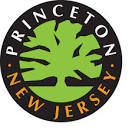The Town of Princeton has not yet finalized its latest affordable housing plan, but what is clear is that it will generate a significant number of school-aged children from the 757 low- and moderate-income housing units needed to satisfy its obligation to provide affordable housing.
Anxious to understand the impact of such development on the school system, the Princeton Public Schools Board of Education created an Ad Hoc Strategic Advisory Committee on Growth and Capacity earlier this year.
After months of study, the advisory committee presented its report to the school board at the board’s Sept. 24 meeting. The report is focused on the number of school-aged children that may be generated by those low- and moderate-income units.
“(You) asked us to look at some of the growth factors driving enrollment and this is a summary of that report,” Robert Powell, who chairs the ad-hoc committee, told the school board.
Powell is the managing director of Nassau Capital Advisors LLC, which provides real estate and financial advisory service to public and private clients. He was the first executive director of the New Jersey Economic Development Authority, and has also held management positions in several real estate development firms.
Powell set the stage for the ad-hoc committee’s report by outlining the history of the Mount Laurel doctrine, which requires every town in New Jersey to provide its fair share of affordable housing. The doctrine grew out of lawsuits filed against Mount Laurel Township in the 1970’s.
Mount Laurel Township had rezoned for single-family-home developments, and did not provide for housing for less affluent residents. The lawsuits led to the New Jersey Supreme Court’s 1975 and 1983 well-known Mount Laurel I and Mount Laurel II rulings that required every town to provide for its fair share of affordable housing.
Princeton’s proposed obligation is 757 units of affordable housing, which will be met through a combination of 100-percent affordable housing developments and inclusionary developments, which set aside 20 percent of the units for low- and moderate-income households.
Reeling off a list of proposed developments that include affordable housing units, Powell said those developments could generate 411 school-aged children. This includes developments that are expected to be completed by 2025, and some that may be built after 2025.
The developments that are likely to be completed by 2025 will produce 186 children, Powell said. This includes 104 students in grades K-5, 47 in grades 6-8, and 35 students at Princeton High School.
Developments – mostly inclusionary – that are anticipated to be completed after 2025 will likely generate 225 students. It includes 136 students in grades K-5, 56 in grades 6-8, and 33 at Princeton High School.
Powell was quick to point out that enrollment growth is driven by much more than the requirement to provide affordable housing, as under the Mount Laurel doctrine, and it is important not to lose sight of that fact.
Princeton is 18 square miles, and there is still some vacant land, he said. Princeton has one of the leading universities in its midst, and it has become an increasingly attractive place to live, he said.
Powell pointed to the 30-lot subdivision on the Princeton Ridge proposed by the Lanwin Development Corp., which is currently before the Princeton Planning Board. The 30 single-family houses will likely produce 25 school-aged children, he said.
“We can assume there will be more investments like that. Princeton is an attractive place for families to live,” Powell said. And when the houses are built, the families will come and the school district will experience more enrollment growth, he said.

